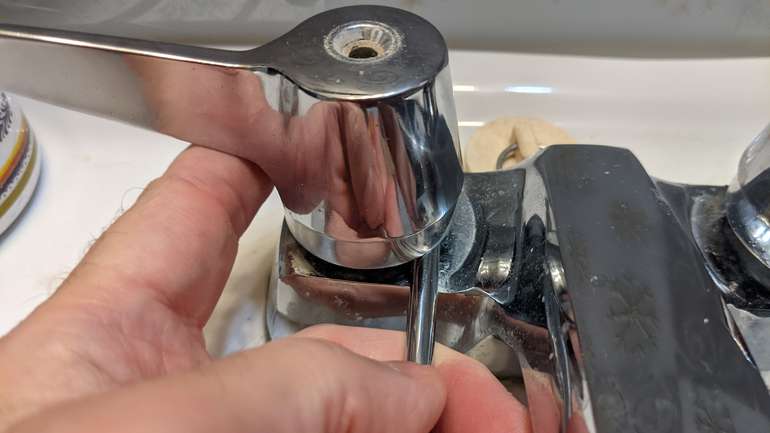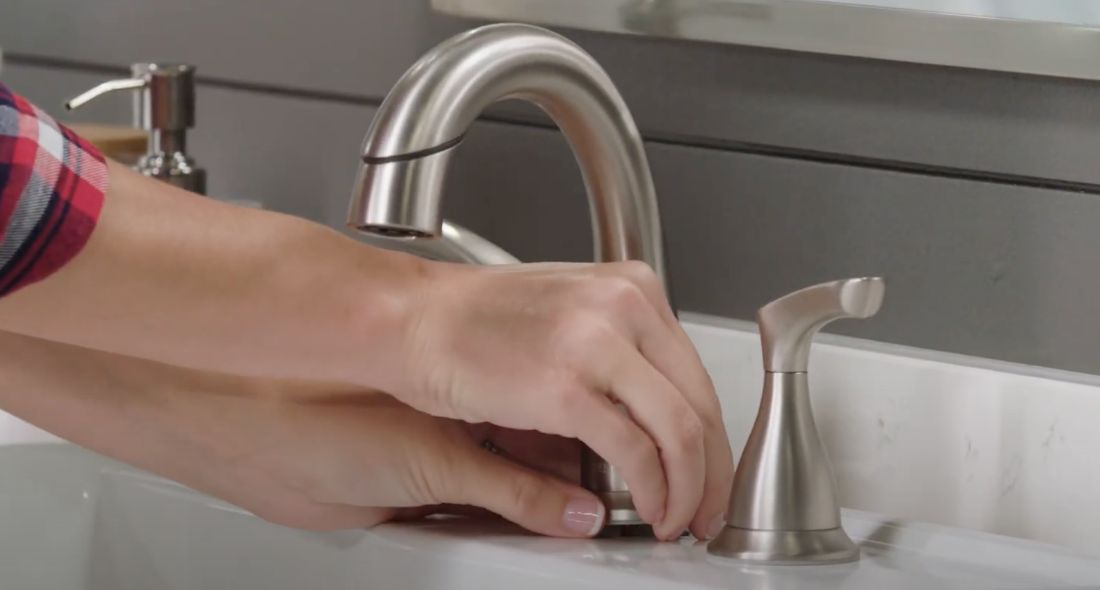The Factors Behind Resolving a Broken Faucet
The Factors Behind Resolving a Broken Faucet
Blog Article
In this article in the next paragraphs you can discover a bunch of helpful information and facts all about Water Dripping from Faucet: Why and How to Fix.

Leaking faucets may seem like a minor trouble, but their effect exceeds simply the aggravation of the sound. From drainage to incurring unnecessary financial costs and wellness risks, neglecting a trickling faucet can result in various repercussions. In this write-up, we'll look into why it's essential to address this typical family issue immediately and successfully.
Waste of Water
Ecological Effect
Leaking faucets contribute dramatically to water wastefulness. According to the Epa (EPA), a single faucet dripping at one drip per secondly can throw away greater than 3,000 gallons of water each year. This not only strains water sources however also affects ecosystems and wild animals depending on them.
Step-by-Step Guide to Fixing a Dripping Tap
Tools Called for
Before trying to repair a trickling faucet, collect the required tools, including a flexible wrench, screwdrivers, substitute parts (such as washing machines or cartridges), and plumber's tape.
Common Faucet Issues and Their Solutions
Recognize the sort of faucet and the details problem triggering the drip. Usual troubles include worn-out washing machines, rusty shutoff seats, or faulty O-rings. Describe manufacturer instructions or on the internet tutorials for detailed advice on repair services.
Financial Expenses
Raised Water Costs
Past the environmental impact, dripping taps can blow up water expenses significantly. The built up wastage over time translates right into higher utility costs, which might have been avoided with timely repair work.
Possible Home Damage
Additionally, prolonged trickling can bring about damage to components and surfaces bordering the faucet. Water buildup can create staining, deterioration, and even structural concerns if left unattended, leading to additional repair work prices.
Health Worries
Mold And Mildew and Mildew Growth
The consistent presence of wetness from a leaking faucet produces an excellent environment for mold and mildew development. These fungis not just compromise interior air top quality yet also position health and wellness dangers, especially for people with respiratory system conditions or allergic reactions.
Waterborne Diseases
Stationary water in trickling faucets can end up being a breeding ground for germs and other pathogens, increasing the threat of waterborne conditions. Pollutants such as Legionella bacteria flourish in stagnant water, possibly causing severe health problems when ingested or breathed in.
Do it yourself vs. Professional Repair work
Advantages and disadvantages of DIY Fixing
While some might attempt to take care of a dripping tap themselves, DIY fixings include their own collection of challenges. Without proper expertise and tools, DIY attempts can intensify the problem or lead to insufficient repairs, lengthening the problem.
Benefits of Working With a Specialist Plumber
Working with an expert plumber ensures that the underlying source of the dripping tap is dealt with successfully. Plumbing technicians possess the proficiency and tools to diagnose and fix tap concerns efficiently, conserving time and decreasing the risk of more damage.
Ecological Responsibility
Private Payment to Preservation
Taking responsibility for taking care of trickling faucets lines up with broader efforts toward water preservation and ecological sustainability. Every person's activities jointly make a substantial influence on protecting priceless resources.
Sustainable Living Practices
By prioritizing timely fixings and adopting water-saving routines, people add to lasting living techniques that profit both existing and future generations.
Safety nets
Routine Maintenance Tips
To prevent dripping faucets, perform routine upkeep such as cleaning up aerators, evaluating for leaks, and replacing worn-out components immediately. Additionally, consider setting up water-saving devices or updating to more reliable fixtures.
Relevance of Prompt Services
Addressing dripping faucets as soon as they're observed protects against further water waste and prospective damages, ultimately conserving both water and money in the future.
Influence On Home Value
Understanding of Well-Maintained Building
Keeping a residential or commercial property in good condition, consisting of addressing upkeep concerns like dripping faucets, boosts its perceived worth and desirability among prospective purchasers or renters.
Impact on Resale Value
Properties with well-maintained plumbing fixtures, consisting of taps, command greater resale worths in the real estate market. Resolving trickling taps can contribute to a favorable impact during residential or commercial property inspections and settlements.
Conclusion
Attending to a dripping tap goes beyond simple comfort; it's a vital action toward saving water, reducing monetary prices, and protecting health and wellness and property. Whether through do it yourself fixings or professional support, doing something about it to fix dripping faucets is a tiny yet impactful means to promote accountable stewardship of sources and contribute to a much healthier, extra sustainable future.
How to Fix a Dripping or Leaky Faucet
A leaking faucet is one of the most common problems that homeowners encounter, but it being commonplace doesn’t make it any less annoying. The constant drip drip drip of a leaking bathtub faucet, showerhead, or sink tap can disturb your home’s serenity. Left neglected, a dripping faucet can also result in higher water bills and discoloration or mold growth in your sink or plumbing fixtures.
Fortunately, you don’t have to be a trained plumber to know how to stop a dripping faucet. With some basic tools, replacement parts, and a little patience, leaky faucet repair is a breeze. In this article, we’ll explain what causes dripping faucets and how you can fix them.
What Causes a Leaking Faucet?
Kitchen and bathroom faucets come in all manner of designs, but most involve some combination of valves, O-rings, seals, and washers. The O-ring is usually the weakest link, but any one of these pieces can wear down over time. Heat, moisture, temperature fluctuations, minerals, mold, and movement can contribute to warping and corrosion, breaking the watertight seal. This just comes with the territory of being a homeowner. Everything is always subject to wear and tear, and some component parts of your appliances and fixtures need to be replaced on occasion. At least replacement O-rings are cheap!
More rarely, dripping faucets can be a symptom of excessively high water pressure. Were this the case in your home, you would probably notice that the leak is not isolated to one faucet. Water pressure issues are harder to resolve on your own. We recommend contacting a professional plumber if you suspect your water pressure is too high.
How to Fix a Dripping Faucet
Pipe wrench or monkey wrench Allen wrench set Screwdrivers Old towel or rag Shut off the water.
Before you do anything, you need to turn off the water to keep from drenching your kitchen or bathroom. You should find a valve under the sink and against the wall. Once you’ve turned this valve, try turning the faucet on to confirm that the water source has been cut off.
If you can’t locate your local valve for the faucet you’re working on, you can always shut off the water to the house at the main valve. Of course, this will prohibit anyone from using the sinks, showers, or toilets while you’re working on the faucet that’s giving you trouble.
Plug or block the drain.
You’ll be disassembling the faucet and removing some small bits of hardware. Plug the drain with a stopper or rag to avoid the possibility of a small screw falling into your P-trap.
Take apart the faucet assembly.
There are several varieties of kitchen and bathroom faucets, each with its own manner of assembly. For detailed instructions on how to disassemble your faucet, you can refer to the fixture’s manual or contact the manufacturer. If you know whether you have a ball, disc, cartridge, or compression faucet, you can find detailed schematics online.
In general, you need to begin by removing the faucet handles. You might notice a small screw that you’ll need to remove with a screwdriver or Allen wrench. If you don’t see any visible securing hardware, it’s likely hidden under a decorative cap that can be unscrewed or popped off with flathead screwdriver.
Remove each piece methodically, consulting a schematic when necessary. Take notes or arrange the pieces in such a way to make it easier to correctly reassemble the faucet later.
Remove the cartridge.
Once you’ve removed the handles and securing hardware, you should be able to remove the valve cartridge or stem. Some cartridges will slide right out. Other faucet models will require you to loosen a nut with a pipe wrench before you can remove the valve stem.
Examine the exposed hardware.
With the cartridge or stem removed, inspect the component parts. Check the rubber O-rings for wear and tear. Also examine the seat washer for corrosion or other damage. These pieces are usually the responsible parties for a dripping faucet, but it’s worth inspecting the other component parts while you have the faucet disassembled.
Find replacement parts.
Once you’ve identified which faucet component has failed, find an identical replacement. Your local hardware store should have O-rings, seat washers, and other standard components in stock. If you have a luxury or uncommon faucet, you may have to contact the manufacturer for a replacement part.
It’s a good idea to take your old parts with you to the hardware store so you can compare them with the store’s inventory and be sure you’re purchasing the correct replacement.
Reassemble the faucet.
With your new parts in hand, reconstruct the faucet and handles. Don’t be tempted to overtighten screws or nuts. You might think this could create a better seal, but it can instead damage or bend a delicate part of the assembly and create a new problem for you.
Turn on the water and test the faucet.
The only thing left to do is test your work. Unplug the sink, turn the water back on, and try the faucet. Congratulate yourself on a job well done!
https://www.libertyhomeguard.com/how-to-fix-a-dripping-or-leaky-faucet/

Do you enjoy reading about Why Is It Important To Fix Your Leaking Tap/Faucet?? Create a remark directly below. We would be glad to know your suggestions about this write up. Hoping that you come back again soon. Remember to pause to distribute this blog posting if you enjoyed reading it. Thank you so much for your time invested reading it.
Report this page